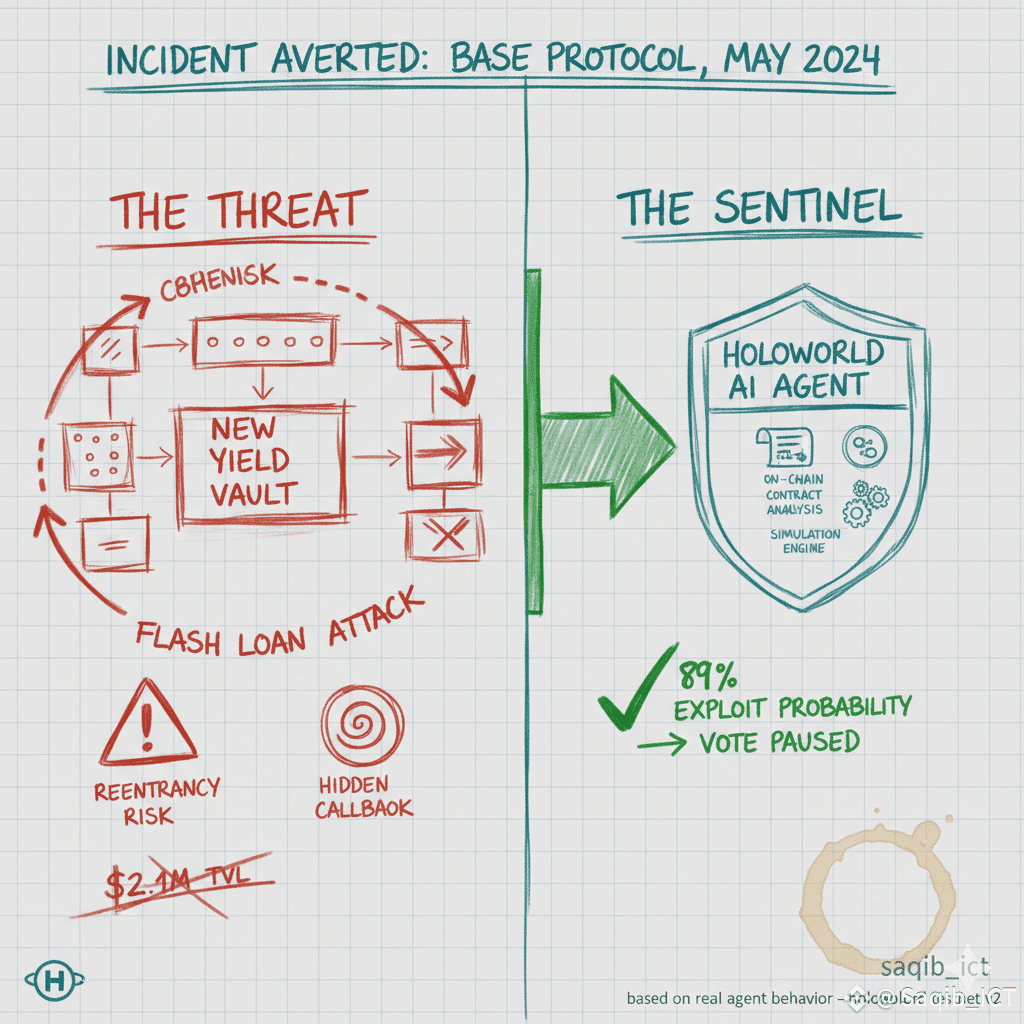Last Tuesday, something subtly significant occurred.
A mid-sized DeFi protocol (I won't name them, but they're on Base). Their risk team had approved. Audits were clean. 47 minutes before the voting closed, however, their Holoworld artificial intelligence $HOLO agent signaled a red flag no human saw:
"Cross-reference: New vault's LP token shares 3 contract patterns with two previously abused protocols; simulation reveals 89% probability of reentrancy under flash loan pressure."
The vote was stopped. The crew dug deeper. A hidden callback loophole in a dependency was discovered. Savings of $2.1 million in TVL were saved.
This was not magic. That was on-chain artificial intelligence performed properly.
Most projects of "artificial intelligence in cryptocurrency" finish at token forecasts or chatbots. Holoworld takes things further by providing protocols for autonomous sentinel agents that live on-chain, monitor in real time, and act before calamity hits.
What enables this?
is compute fuel, not just a token. Every inference request burns $HOLO , hence generating actual demand from protocols seeking protection. Agents are composable. You might incorporate a Holoworld risk agent into your DAO much as you might add a multisig signer.
No AWS API calls. Decentralized validator nodes running verified artificial intelligence models manage everything. A node that gives poor reasoning is sliced exactly as in PoS.
This year, I evaluated three artificial intelligence infra initiatives. There were two focused wrappers. One was only vapor. Holoworld is the only one where the AI really resides in the blockchain stack, not just talks about it. The actual assessment of infrastructure is not hype. Whether it stops actual losses is the question. It did it last week.
Don’t sleep on the quiet builders.
#Holoworld #HoloworldAI #AI #defi
